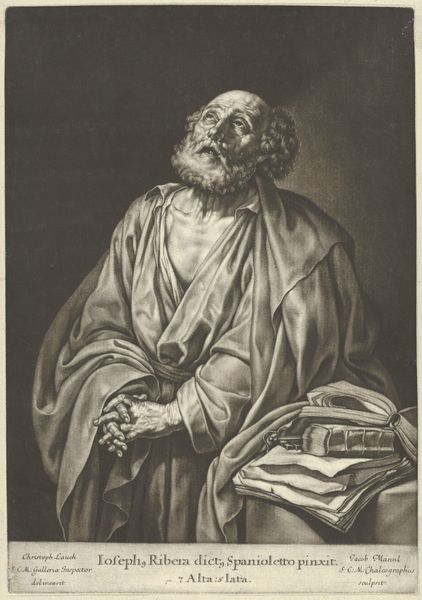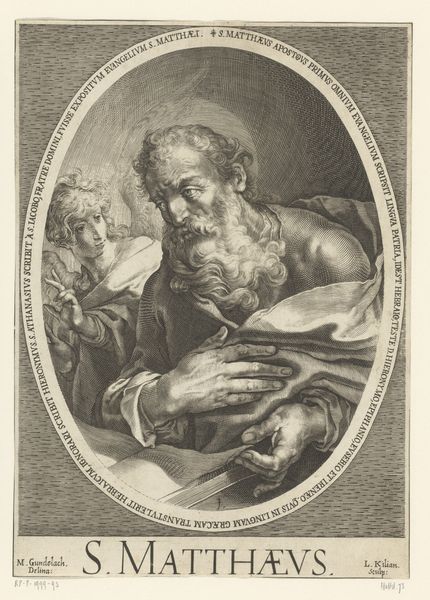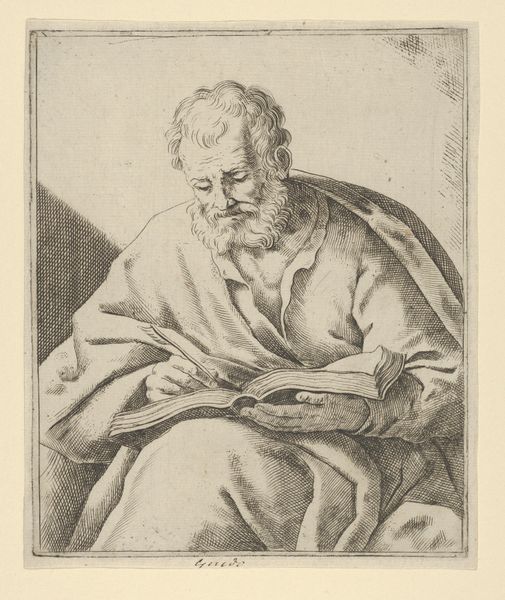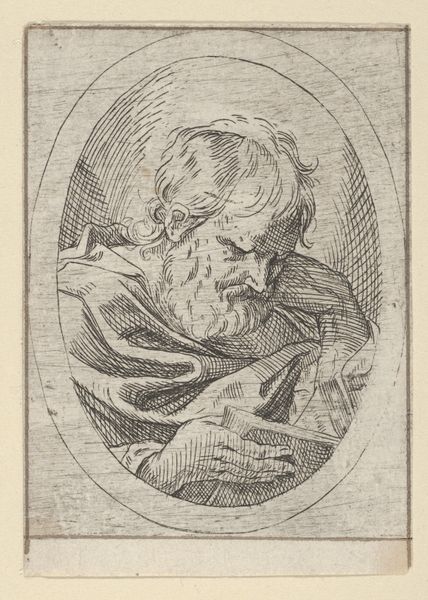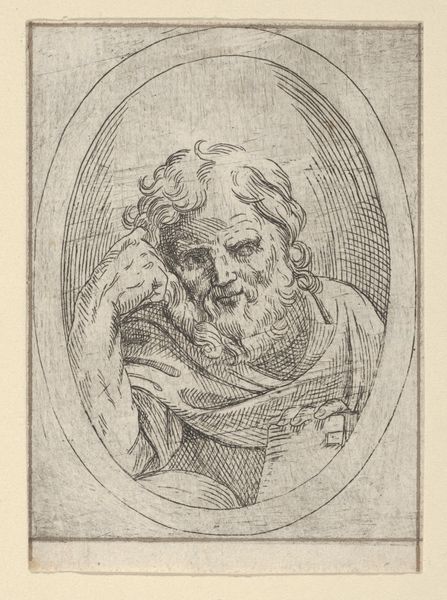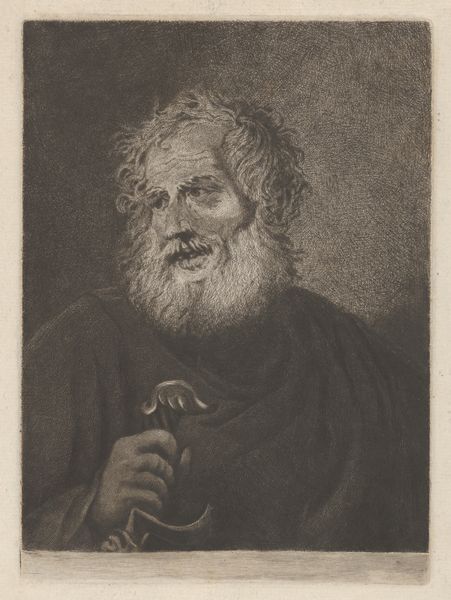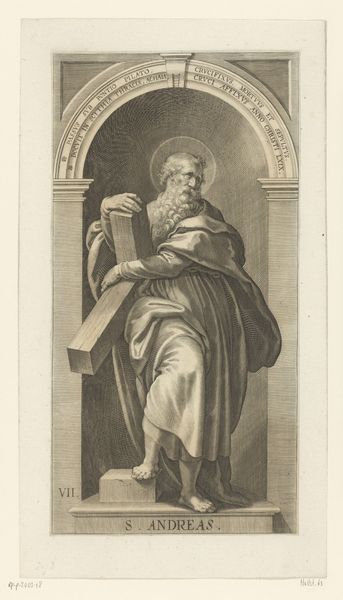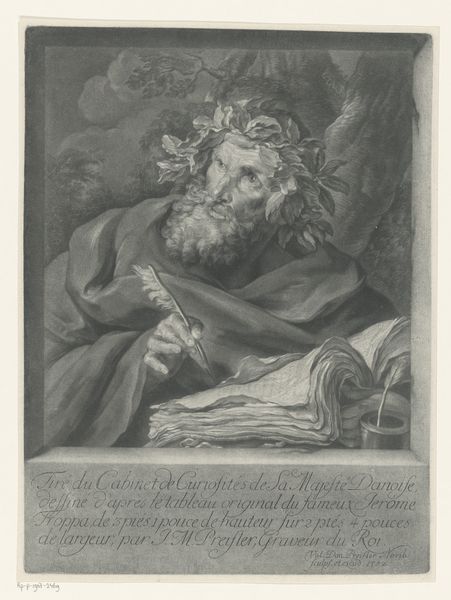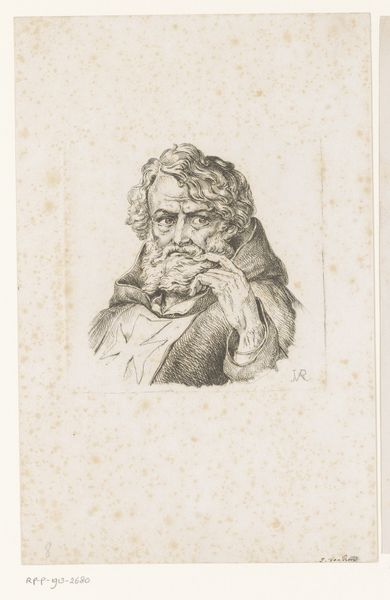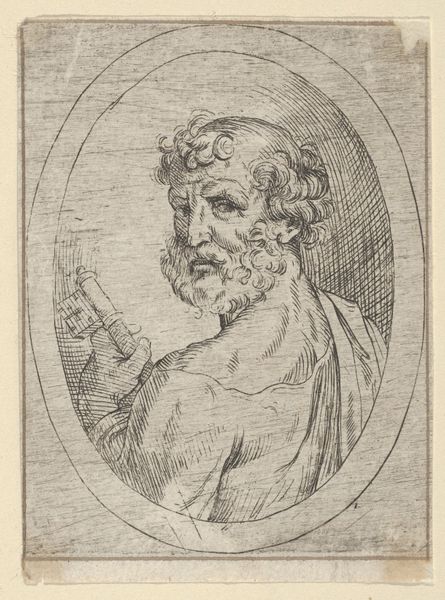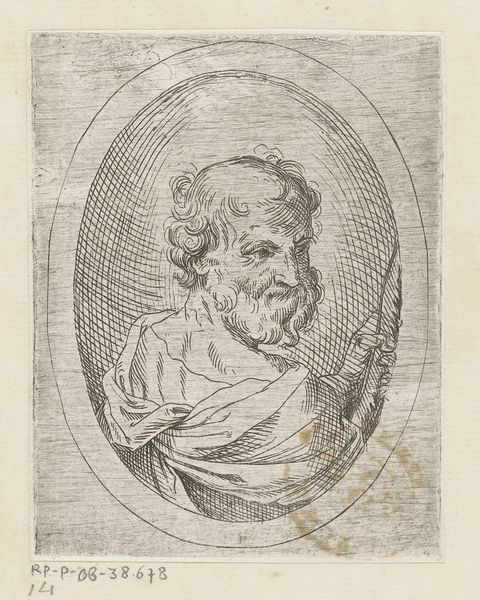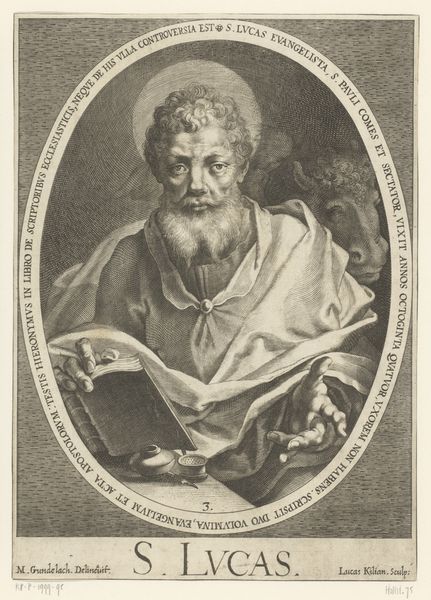
Dimensions: height 327 mm, width 226 mm
Copyright: Rijks Museum: Open Domain
Curator: This somber portrait of a man reading, rendered through engraving, immediately strikes me with its dramatic chiaroscuro. The deep shadows almost completely envelop the subject. Editor: Well, let’s dive a little deeper. This is "Matteüs, lezend," attributed to Edward Fisher, created sometime between 1758 and 1785. As an engraving, its creation depended heavily on the engraver’s skill, the tools they used, and of course, the accessibility of the original painting. Curator: Absolutely. The labor involved in producing this engraving for wider distribution needs underscoring. And how that labor directly impacts our interpretation and relationship to the artwork. Notice the emphasis on line, almost etching-like, conveying the aged face and textured beard of the sitter. Editor: I’m intrigued by how prints such as this one circulated widely, effectively democratizing access to images. It provided visual material to a growing middle class and undoubtedly fueled popular taste for certain styles and subject matters. Consider how this particular print also acknowledges the collection of M. Hone as the origin of the image it portrays. Curator: Precisely. The very act of reproduction transforms the original into a commodity. We must consider the socio-economic impact the piece would have as it moved from Hone's collection to print, shifting from a private enjoyment to a public object with the assigned pricing clearly seen at the bottom. Editor: And even the choice to represent Matteüs—a saint and gospel writer—suggests an intended moral or intellectual appeal. These images offered visual models and promoted literacy. It is difficult to deny the complex entanglement of art, religion, and commerce inherent in this engraving’s creation and distribution. Curator: Seeing the final stage of a complex reproduction process really reframes one's sense of the original work. What kind of paper and inks were employed, and the techniques the printmakers followed—these all played crucial roles in realizing the finished product and shaped how it was ultimately perceived. Editor: Yes, by carefully studying the context, the cultural influences, and the production of imagery, we can move toward more thoroughly understanding the historical importance of works such as "Matteüs, lezend." Curator: For me, this exploration reasserts how crucial it is to examine both the "what" and the "how" of art. Editor: A perfect perspective indeed.
Comments
No comments
Be the first to comment and join the conversation on the ultimate creative platform.

